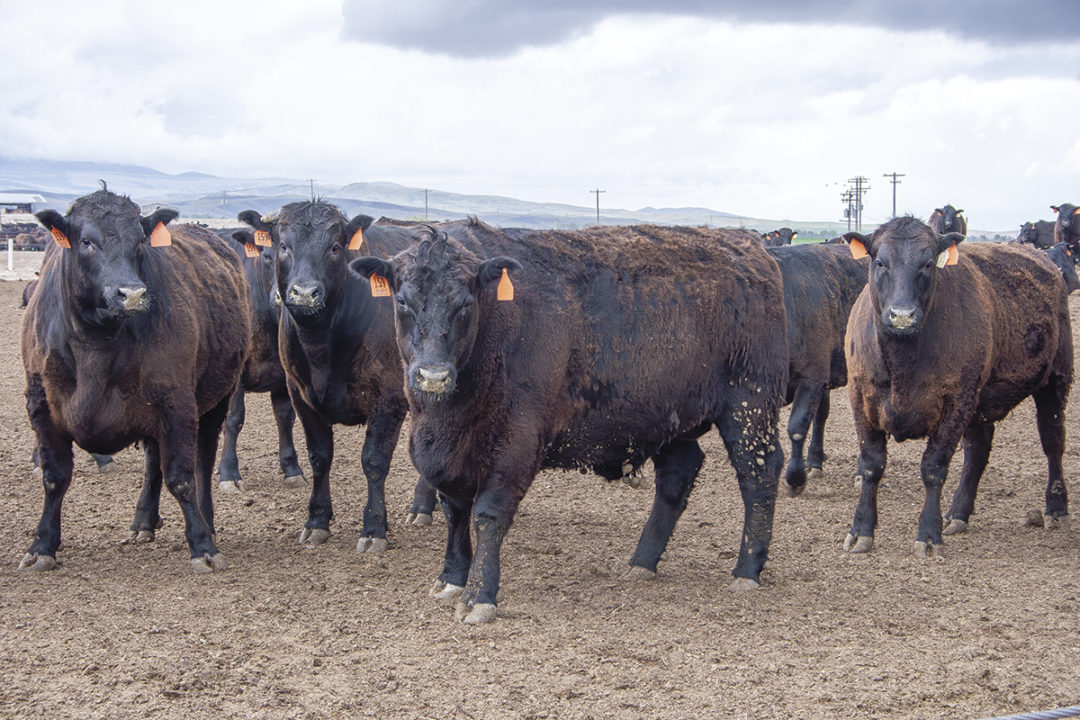In the realm of cattle feeding, navigating a bullish market can feel much like riding a bull – thrilling, swift and inherently risky. But for those equipped with the right financial tools and strategies, this volatility can be beneficial. One tool that's becoming increasingly significant is the use of options to hedge against price risk.
Before delving into the strategy, it's crucial to understand the fundamental workings of options. An option contract provides the holder with the right, but not the obligation, to buy or sell a certain amount of an asset – in our case, cattle futures – at a predetermined price, within a specific period. This setup allows you to secure a price today for the cattle you plan to sell in the future. There are two main types of options – call options, granting the right to buy, and put options, granting the right to sell.
For cattle feeders, put options frequently serve as a valuable resource. By purchasing a put option, you can set a minimum price for your cattle (not including basis), creating a safety net against potential price drops. At the same time, this strategy does not limit your upside if market prices increase, making it a potentially lucrative tactic in a bull market.
While options may seem like the ideal solution, it's important to recognize that they are not without cost. They require an upfront fee or premium, which must be considered when budgeting and planning. Understanding the variables that influence option premiums – such as the option's strike price, the time until expiration and the volatility of the underlying asset – is a critical aspect of effective risk management for cattle feeders.
Moving beyond the fundamentals, it's important to consider how options serve as a strategic tool in managing price risk. In a bullish market, there's a strong inclination to go unhedged and take full advantage of rising prices. But it's essential to remember that markets are cyclical, and what rises can also fall. That's where the security offered by options becomes invaluable.
Let's look at a practical example. Imagine you're a cattle feeder with a pen that will be ready for market in six months. Current market prices are high, and you anticipate that they could climb even higher. One strategy is to wait it out and see what happens. But, as experienced operators know, relying on hope is not a strategy. Instead, you decide to purchase a put spread, effectively protecting a “block” of price for your cattle.
This is buying a put at one strike price and selling a put below at a lower strike price. Your protection lies between the two strike prices. So, in feeder cattle, if you buy a $250 put and sell a $236 put, your protection is the area between $250 and $236 – anything below $236 and you are no longer protected. The total you pay for the option spread, plus fees and commissions will reduce your level of protection by that amount.
This is a worthwhile strategy for two reasons: Since you’re both buying and selling a put, it makes your premium cheaper, therefore allowing your protection to be closer to the current futures price (at the money); if the market rises – and as a feeder you should want this – you do have a portion of your position that still participates in the upside. The sold put below your purchased put will profit if the market rises, making the loss on the purchased put lesser. This is appealing to some because a majority of the time, most options you simply outright buy will expire worthless.
If prices rise, you can sell at the higher market price, with the only loss being the option premium. However, if prices fall, you have the peace of mind of being able to sell your cattle at the strike price of your put option, mitigating potential losses.
Balancing cost and benefits
As with all investment strategies, using options requires balance. The cost of options needs to be considered in relation to potential benefits, and their use should be a component of a broader risk management plan. This could include Livestock Risk Protection (LRP) insurance, futures contracts built around option spreads to help your account remain “delta neutral” or less impacted by major swings in the market, or even forward contracting your physical cattle.
Understanding option volatility is how we determine the right position at the right time. For, example, let’s compare buying puts versus put spreads. When option volatility is changing, the choice between buying puts or put spreads becomes crucial for effective risk management. Put options provide direct protection against price declines in the cattle market, but their premium costs can be influenced by changes in option volatility. In a scenario of increasing volatility, the premium for individual put options may rise, making them more expensive to hold as a hedge. On the other hand, utilizing put spreads involves simultaneously buying and selling put options with different strike prices. This strategy can mitigate the impact of changing volatility on the overall hedge cost. In times of rising volatility, the premium for the higher strike put sold can offset the increased premium of the lower strike put purchased, potentially reducing the overall cost of the hedge. However, it is essential for cattle feeders to carefully assess their risk tolerance, market outlook and the impact of changing volatility before deciding on the appropriate strategy. While buying puts offers straightforward protection, put spreads can provide a more cost-effective approach to managing risk when option volatility is fluctuating. Ultimately, a balanced evaluation of market conditions and risk management goals will guide cattle feeders in making informed decisions to protect their operations effectively.
As we move further into an era characterized by increased market volatility, the use of options in cattle feeding appears set to grow. Their potential to provide protection while allowing cattle feeders to benefit from favorable price movements makes them an attractive tool in risk management. However, as with any tool, effective use of options requires a clear understanding and strategic application.
In conclusion, as longer-term non-seasonal trends become increasingly common in cattle feeding, the strategies we employ to navigate these trends must evolve. Options offer a flexible method for managing price risk, providing cattle feeders with a powerful tool against the unpredictability of market trends. While they may not eliminate the volatility of the market, they can help ensure that you are better prepared for the challenges it brings.
The cattle feeding industry, much like its market trends, is dynamic and filled with opportunities for those who are equipped to manage the risks involved. The effective use of options can provide a level of control in this volatile environment, helping cattle feeders to not only survive but thrive during bullish market runs.
Futures and options carry a high degree of risk. Purchasers and sellers of options should familiarize themselves with the type of option (i.e., put or call) they are contemplating trading and the associated risks. You should calculate the extent to which the value of the options must increase for your position to become profitable, taking into account the premium and all transaction costs. Utilizing strategies using combinations of positions, such as spread and straddle positions, may be as risky as taking a simple long or short futures position.









